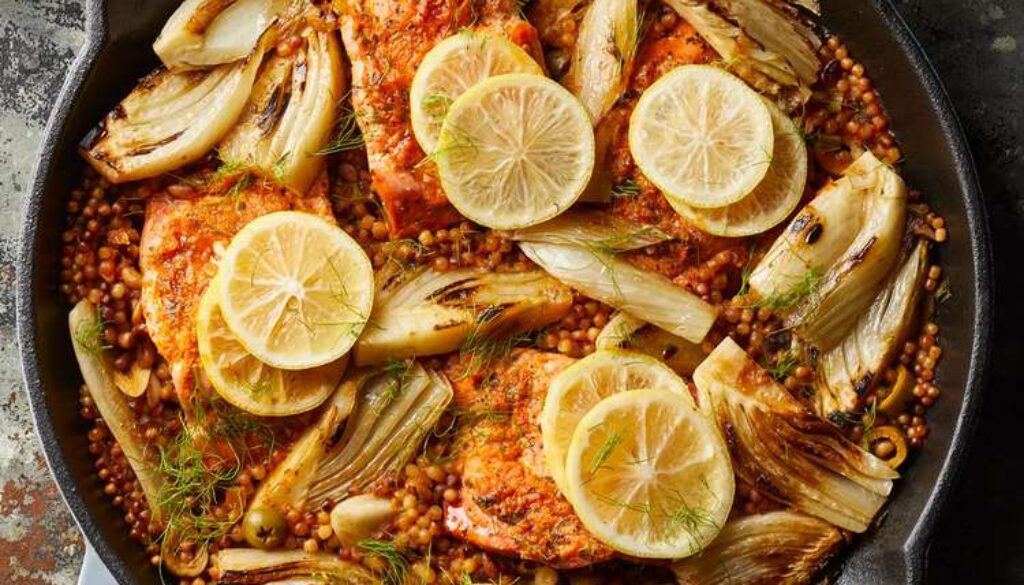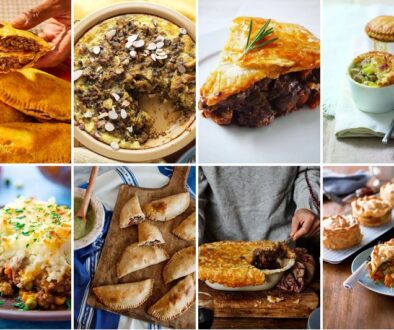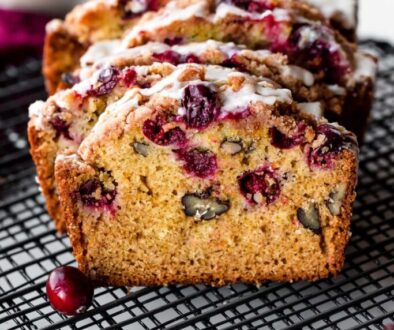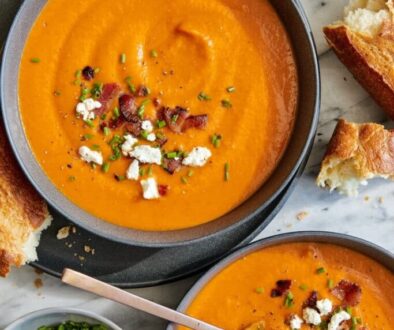One-Skillet Salmon with Fennel & Sun-Dried Tomato Couscous
Sun-dried tomato pesto and lemon do double duty to season both the salmon and the couscous in this healthy one-pan dinner recipe. Serve the salmon with extra lemon wedges and a dollop of plain yogurt, if desired.
By Breana Lai Killeen, M.P.H., RD
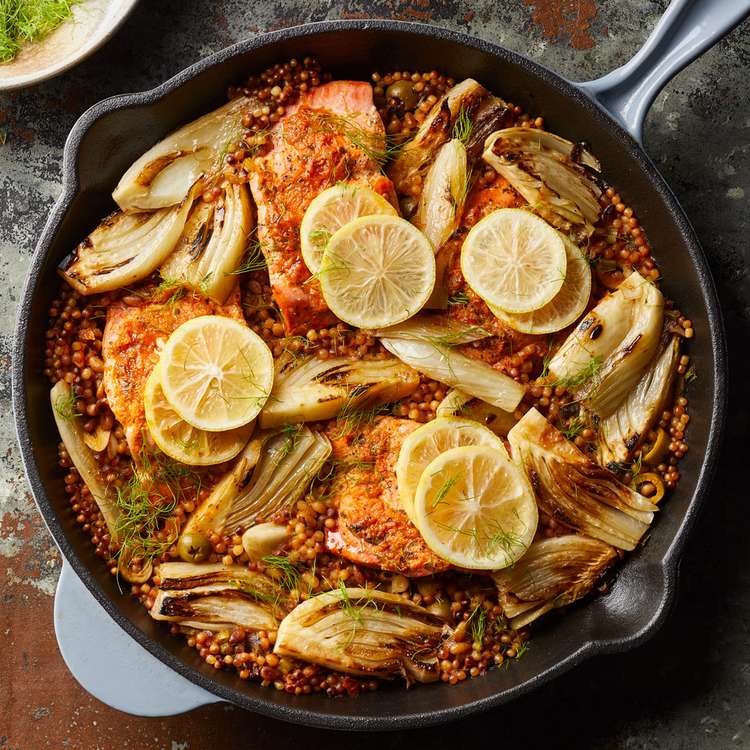
Source: EatingWell
Prep Time: 30 mins
Additional Time: 10 mins
Total Time: 40 mins
Servings: 4
Ingredients
- 1 lemon
- 1 ¼ pounds salmon (see Tip), skinned and cut into 4 portions
- ¼ teaspoon salt
- ¼ teaspoon ground pepper
- 4 tablespoons sun-dried tomato pesto, divided
- 2 tablespoons extra-virgin olive oil, divided
- 2 medium fennel bulbs, cut into 1/2-inch wedges; fronds reserved
- 1 cup Israeli couscous, preferably whole-wheat
- 3 scallions, sliced
- 1 ½ cups low-sodium chicken broth
- ¼ cup sliced green olives
- 2 tablespoons toasted pine nuts
- 2 cloves garlic, sliced
Directions
- Zest lemon and reserve the zest. Cut the lemon into 8 slices. Season salmon with salt and pepper and spread 1 ½ teaspoons pesto on each piece.
- Heat 1 tablespoon oil in a large skillet over medium-high heat. Add half the fennel; cook until brown on the bottom, 2 to 3 minutes. Transfer to a plate. Reduce heat to medium and repeat with the remaining 1 tablespoon oil and fennel. Transfer to the plate. Add couscous and scallions to the pan; cook, stirring frequently, until the couscous is lightly toasted, 1 to 2 minutes. Stir in broth, olives, pine nuts, garlic, the reserved lemon zest and the remaining 2 tablespoons pesto.
- Nestle the fennel and salmon into the couscous. Top the salmon with the lemon slices. Reduce heat to medium-low, cover and cook until the salmon is cooked through and the couscous is tender, 10 to 14 minutes. Garnish with fennel fronds, if desired.
Tips
Tip: Most salmon–wild and now some farmed–is considered a sustainable choice). For farmed, ask for fish that’s raised in land- or tank-based systems. For more information about sustainable seafood, go to seafoodwatch.org.
Originally appeared: EatingWell Magazine, January/February 2018
